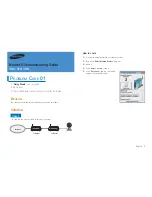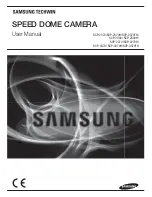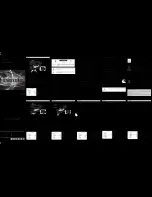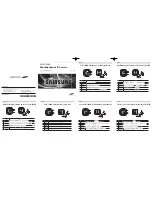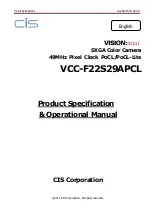
Controlling image capture
STINGRAY Technical Manual
V2.2.0
170
The following screenshot shows an example of broadcast commands sent with
the Firedemo example of FirePackage:
•
Line 1 shows the broadcast command, which stops all cameras con-
nected to the same IEEE 1394 bus. It is generated by holding the
Shift
key down while clicking on
Write
.
•
Line 2 generates a
broadcast one_shot
in the same way, which forces
all connected cameras to simultaneously grab one image.
Jitter at start of exposure
The following chapter discusses the latency time which exists for all Stingray
CCD models when either a hardware or software trigger is generated, until the
actual image exposure starts.
Owing to the well-known fact that an
Interline Transfer CCD
sensor has both
a light sensitive area and a separate storage area, it is common to interleave
image exposure of a new frame and output that of the previous one. It makes
continuous image flow possible, even with an external trigger.
The uncertain time delay before the start of exposure depends on the state
of the sensor. A distinction is made as follows:
FVal is active
the sensor is reading out, the camera is busy
In this case the camera must not change horizontal timing so that the trigger
event is synchronized with the current horizontal clock. This introduces a
maximum uncertainty which is equivalent to the line time. The line time
depends on the sensor used and therefore can vary from model to model.
FVal is inactive
the sensor is ready, the camera is idle
Figure 95: Broadcast one-shot





































